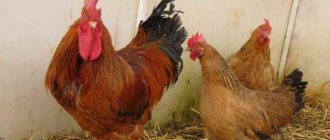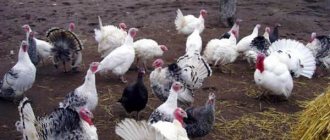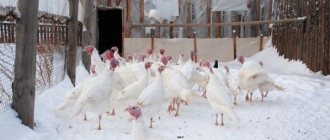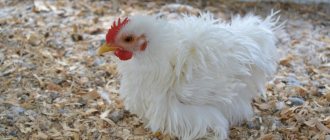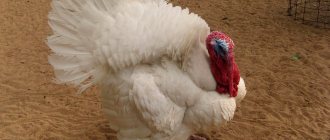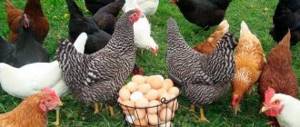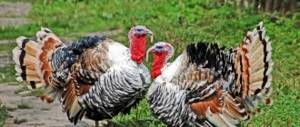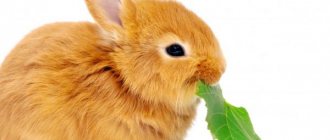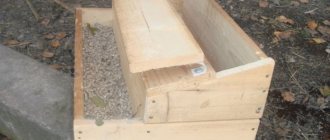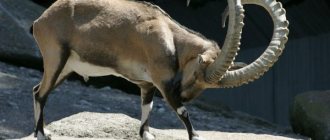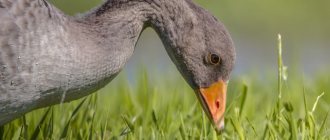The best turkey breeds
Meat turkeys are classified into 3 categories:
- Light, with an average body weight of 5 kg for females and 9 kg for males.
- Average, when the productive weight of turkeys is 7 kg, and turkeys - 16 kg.
- Heavy. Adult laying hens of this type weigh about 10 kg, and males weigh 23-25 kg.
The following is a description of the best turkey breeds, with photos and names.
Black Tikhoretskaya
The breed was bred in the region of the same name in the Krasnodar region, in the middle of the last century. Black Tikhoretsk turkeys are distinguished by their characteristic coal plumage, cast in bronze in the tail area. The body of such a bird is wide, the head is of medium size. The body weight of an adult female is about 5 kg, and that of a male is 9 kg.
The egg productivity of these birds is characterized as average, and the hatchability of offspring is up to 85%. Tikhoretsky turkeys are not the largest representatives of their species, so they are active and enjoy spending time on the pasture.
Bronze broad-breasted
These birds also belong to the average type, but have a rather dense body constitution. Their black outfit shimmers with green on the chest, and shimmers with bronze closer to the back. The average weight of a female that has reached good productive condition is 9 kg, males are 4-7 kg heavier.
Bronze turkeys produce up to 100 eggs per year, and their meat has excellent consumer qualities. Representatives of the breed are very fertile, and their offspring are strong and hardy. Both young animals and adults do not pose any particular difficulties in caring for and feeding them.
BIG – 6
Large turkey
Big - 6 are heavy cross breed turkeys. This is a very popular and relevant species among the avian industry. Often found on small farms and large enterprises. This cross appeared thanks to the crossing of the BIG - 5 branch and the BUT - 8 cross. At the time of slaughter, males reach more than 23 kilograms, and females - eleven kilograms. The main thing is that the meat yield is over 80 percent, and cultivation is simple. Turkey poults are born white.
Birds grow very quickly, already at the age of three months their weight is 5 kilograms. It takes a little feed to feed them, which is why the breed is profitable for breeding. The plumage of these birds is always white and fits very tightly to the body. The body structure is very strong and powerful, the body is oblong, the chest is very large and strong, almost 31 percent of the meat is located in it. The tail is very bushy and noticeable, the legs are powerful and long, quite widely spaced between each other, and the head is medium in size.
Bronze 708
Bronze turkeys were bred in France - bronze broad-breasted turkeys were used in the selection. The cross inherited rapid growth rates from the parent generation and surpassed it in body weight.
Moscow white
This is a medium-sized breed, which experts consider one of the best in Russian selection for its high meat and egg productivity. Moscow turkeys are distinguished by their dense body, massive chest and snow-white feathers. The weight of a mature female is about 7-8 kg, and that of a male is 10-13 kg. Egg production – over 100 pcs. in year. The young grow quite quickly, and by the age of 4.5 months. Each chick gains up to 5 kg.
Moscow Whites are suitable for breeding in almost any Russian climate, therefore they are extremely popular among domestic poultry farmers.
Uzbek fawn
Another breed that is of the medium type in size and weight. Uzbek fawn turkeys are distinguished by their narrowed heads, long necks, red-brown feathers and passion for flight. The weight of a productive female reaches 5-7 kg, and that of a male – up to 9-11 kg. Turkey poults eat a lot and with appetite, so at 16 weeks they can have a body weight of over 4 kg.
The egg production of the Uzbek fawn turkey is not the highest, but representatives of the breed are unpretentious to feed, as well as living conditions.
White broad-breasted
This heavy, early-ripening variety of turkeys is breaking records in demand and prevalence in Russia, as well as in the neighboring countries. Birds, dressed in snow-white feathers, have a massive body of strong constitution. The body weight of an adult female is from 12 to 13 kg, and males are twice as heavy.
The egg productivity of laying hens is determined at the level of 120-125 pcs. annually. By the end of the 3rd month of life, turkey poults reach ideal marketable condition, therefore they are quite suitable for slaughter.
The White Broad-breasted is not very suitable for novice farmers, as it has a reputation for being very capricious in terms of feeding and maintenance.
Victoria
Victoria turkeys are included in the list of hybrid breeds (crosses). They were bred in the village of Obilnoye located near Stavropol at the North Caucasus Experimental Poultry Station. The birds are adapted to the peculiarities of the Russian climate and have good indicators of meat and egg productivity. The survival rate of young animals is at a high level.
Victoria
The Victoria turkey breed was bred in Russia. For crossbreeding, early maturing, fertile turkeys and heavy, strong males were used. The breed is suitable for cage and floor keeping. Males are capable of reaching 25 kg in the weight category, and females - 11 kg. Cross Victoria has become famous for its high yield of clean meat, as a result of which it is easily and profitably sold.
The largest breed of turkeys
The breed of the largest and heaviest turkeys was bred in Canada. It was the result of long and painstaking work by local biologists. The bird turned out to be strong and long-legged, with lush tail feathers and fleshy folds of skin in the head and neck area. The outfit of Canadian turkeys can be white, pure black or with a bronze sheen.
Their sternum is wide, their body is heavy and dense. The chicks are unpretentious to food, grow quickly and gain weight, which reaches 5-6 kg by the age of one and a half months. The body weight of an adult turkey is from 15 kg, and that of a male is twice as much. Representatives of the breed acquire the best marketable condition by the end of the 3rd month, but begin to lay eggs only after another six months. If there is a male, almost all eggs in laying hens are fertilized. Egg production – about 100 pcs. in year.
Only the most fertile and healthy birds are left for breeding; the rest are fed for meat on the 90th day. This is due to the fact that longer fattening is unprofitable, since the rate of growth and weight gain after 3 months decreases, and feed consumption increases.
The dietary pulp of Canadian turkey is extremely tender and has a pleasant, refined taste, so poultry farmers have no problems selling this product.
The breed is recommended for keeping and breeding in warm climates. This means that for regions with harsh winters, even if the poultry house is insulated, it is not suitable.
A significant difference in the weight of laying hens and males sometimes makes the process of mating impossible, which in turn makes it difficult to obtain offspring naturally. To solve the problem, many breeders use artificial insemination.
BUT -8
Turkey cross is a relatively new type of turkey that belongs to the white turkeys. This cross was created by British scientists, who also bred the two species described above. Booth-8 is a lightweight species, with a turkey reaching a maximum weight of seventeen kilograms at seventeen weeks of age, and a female turkey reaching a maximum weight of 9 kilograms. Experts also emphasize that the waste of feed on birds doubles with age. It is because of this that most farmers advise sending turkey poults to slaughter at the age of 14 to 17 weeks, the converter is average.
Otherwise, because of this, you will spend a lot on feed, and even after selling the carcasses you will not be able to recoup the amount spent on feed. In terms of external description and appearance, the carcass is no different from others. This type of converter is positive. Feeding a turkey will not be a big hassle. The feathers are white in color and their structure is very dense without any dark spots. The body is elongated, strong, and the chest is well developed. The legs are very strong and widely spaced.
Turkeys have a very strong and expressive neck, there are also bright growths on the head of the bird and a bushy tail stands out. You can see this view in more detail in the photo. It is because of this that most farmers keep this species for decorative purposes.
The best turkey crosses
Almost more often than pedigree birds, farmers and owners of small household plots choose cross-breed turkeys. Such turkeys have excellent productive characteristics and, as a rule, are unpretentious in keeping.
Heavy-cross turkeys are those whose body weight at slaughter reaches 16 kg or more.
Big 6
This luxurious snow-white giant, with a decoration of black fluff on its chest, will become not only the pride of the poultry farmer, but also the decoration of any poultry yard. The bird, bred in England, resembles a feathered white ball and is characterized by high fertility and early maturity.
Her body is massive and heavy, convex and wide in the chest area. The body weight of an adult female is 10-12 kg, and that of a male is 25-26 kg. The cross grows quickly and gains weight: at the age of 90 days, the turkey weighs about 4 kg, and at 5 months - up to 10 - 12 kg.
Big 9
Another artificially bred white turkey. It has average meat productivity, is very hardy and prolific. The bird has an excellent appetite, which results in its rapid growth and weight gain. At 17 weeks, the body weight of a Big-9 individual can reach 17 kg, and after 2-3 weeks - 4-5 kg more. Females, as a rule, are half the weight of males, but they grow faster and require less food.
Highly productive Big-9 crosses are often used by breeders as one of the parent lines when breeding new hybrids of meat turkeys.
But-8
These white and broad-chested birds are also the result of the work of British biologists who gave the world the Big 6 and Big 9. However, unlike the latter, But-8 birds are light in type - males by the 4th month weigh only 15-17 kg, and laying hens are twice as light.
Feed consumption for this hybrid increases by almost half as the individual grows. That is why poultry farmers send birds that have reached 13-19 weeks of age for slaughter, otherwise fattening will become unprofitable.
Externally, But-8 turkeys are similar to their cross-breed brothers. Their feathers are light, their body is strong, with a well-developed chest. Male representatives have a proudly curved neck, bright skin growths in the head area, and the tail is distinguished by the splendor of its plumage.
Many poultry farmers appreciate the decorative qualities of this turkey, so they proudly display their luxurious birds at exhibitions, and their photos on specialized Internet sites.
Station wagon
This is a light cross, bred by Russian biologists. At the age of 4 months, males weigh a little more than 6 kg, and laying hens barely gain 5 kg. The station wagon is noticeably inferior to its foreign analogues in terms of the rate of muscle mass gain and maximum productive weight, but it is distinguished by its high vitality and unpretentiousness in maintenance. To fatten the Universals to ideal condition, regular feed developed for meat turkeys is sufficient.
Egg production also cannot be called a record - females produce no more than 70 eggs per year, but offspring can be obtained from almost every egg. Good fertility, as well as a developed brooding instinct, significantly simplifies the breeding of the cross.
Hybrid Converter
Hybrid Converter is a highly productive cross (hybrid) of a heavy type, obtained by hybridizing White Dutch and Bronze Broad-breasted turkeys. The breeder is Hendrix Genetics Company. The bird quickly gains weight and has good egg production. It is suitable for both industrial and home breeding.
Hidon
This is a Dutch hybrid of heavy type turkeys. Birds ready for slaughter weigh 18-20 kg. At the same time, the cost of fattening is relatively small, and the weight gain will be impressive. The meat yield of males is slightly greater than that of laying hens. Laying hens produce from 80 to 100 eggs per year, and the hatchability of offspring is up to 80%.
In general, Hidon are highly productive and profitable turkeys, but they, like the Universals, are noticeably inferior to the popular Big-6 cross.
A significant disadvantage of Khidons is the difficulty in breeding and caring for turkey poults. Young animals get sick from dampness, the slightest drafts and even minor temperature changes. Mating, due to the impressive weight of males, is also a problem, and artificial insemination requires special knowledge and experience from the poultry farmer. That is why the Hidon hybrid is recommended for breeding only by experienced poultry farmers.
BIG – 9
It also belongs to the white idea variety and is distinguished by its good endurance and high percentage of fertility. Within 6 months, one bird can lay more than 125 eggs. The hatching percentage is 85. Similar to the Victoria cross hatching percentage. Turkeys of the BIG -9 cross are a difficult species. Thanks to this, they are excellent for breeding, both for large industrial farms and for small ones. The birds gain their weight quite quickly; already at the seventeenth week their weight is seventeen kilograms.
At twenty weeks, weight is 22 kilograms. Females usually weigh half as much, but they grow faster. One of the positive qualities of this cross is that they do not require a lot of feed. Unlike Big-6, this Big-9 requires less feed. Big 9 was the start for many new lines. It is better to take Canadian origin. The best crosses among whites.
How to choose the right breed for private plots
There are not so many breeds of turkeys, unlike breeds of other birds. For breeding on private farms, it is best to choose:
- North Caucasian Bronze - it is ideal for pasture keeping; it begins to lay eggs at the age of 9-10 months for six months. One individual produces 80 large eggs in a light fawn shell.
- Bronze broad-breasted are relatively small birds that begin laying eggs after 10 months. Crosses have similar external characteristics to North Caucasian ones, strong pectoral muscles, and a large body.
- White broad-breasted - birds with tender meat, grow quickly, adapt well to any climatic conditions. Live weight is relatively small, egg production is good.
The main factors to consider when choosing are maintenance costs, productivity, meat quality, and payback.
White turkeys are much more compact than bronze turkeys and have a rounded body.
In the video we will see turkeys of various breeds and learn about the features of their maintenance.
White Broad-chested Hybrid
The broad-chested white breed became the ancestor of several Hybrid crosses. They were brought out in the middle of the last century, in the USA. Birds are distinguished by the special composition of their meat; it is high in protein and low in fat and cholesterol. They also grow quickly and gain weight. Adapts well to any living conditions. The most famous hybrid broad-breasted turkey crosses are:
- Hybrid Converter (heavy cross)
- Hybrid Grade Maker (middle cross)
The hybrid converter reaches a bottomhole age of 140-150 days. By that time, turkeys of heavy crosses weigh 22-24 kilograms, and turkeys - 12 kilograms. Fast growth and moderate feed costs make the breed popular in many countries. The meat of the White Broad-breasted Hybrid Converter is tasty, and the carcass has excellent marketability.
Hybrid Grade Maker is a medium type cross. At 120-140 days, males weigh about 18-20 kg, and females - 10 kg. Turkeys have the best appearance of meat and carcass at 10-12 weeks. It is even featured in photographs in supermarkets and in commercials. Although the weight of turkeys by that time is small, up to 4-5 kg, birds are often sent for slaughter at this age.
